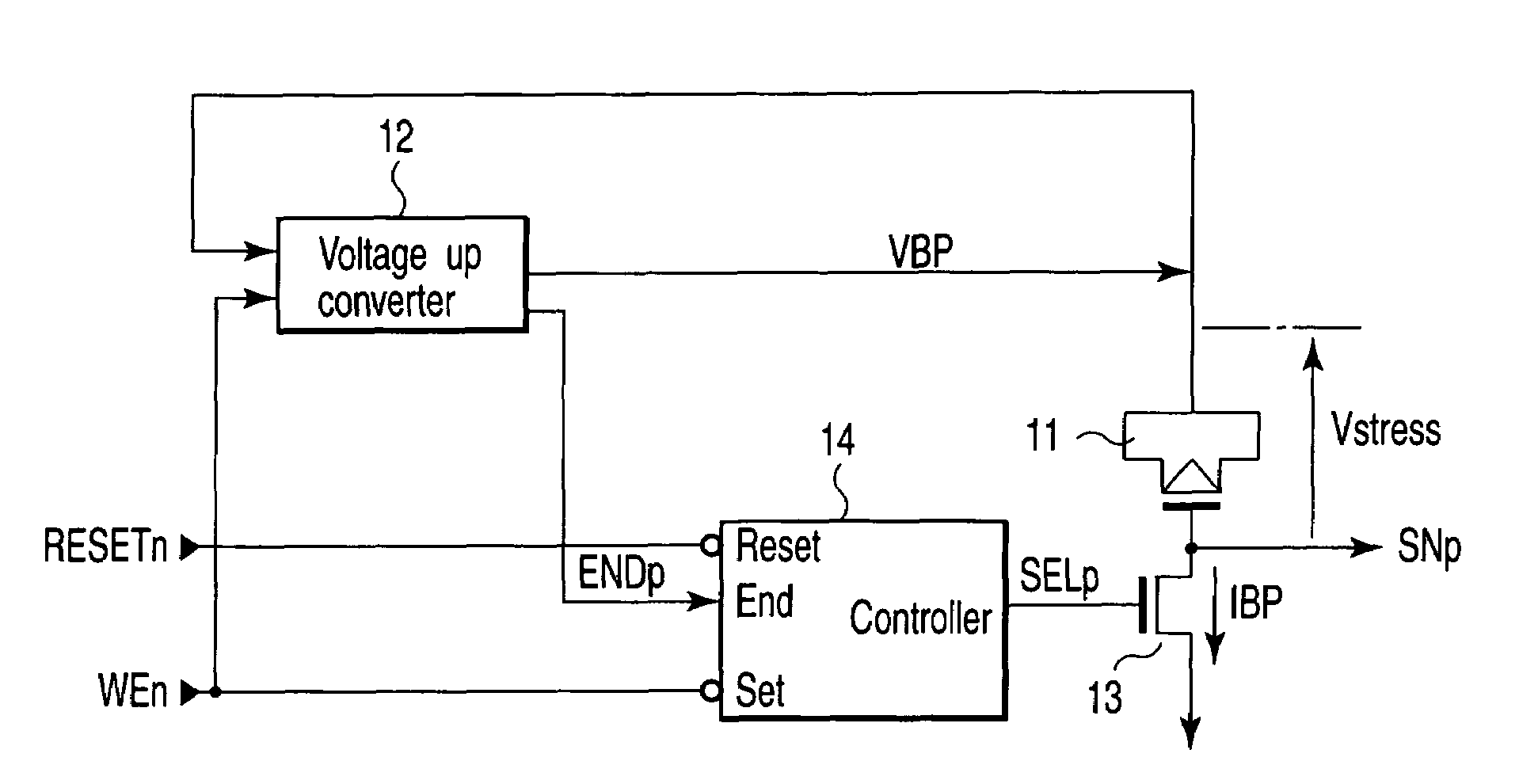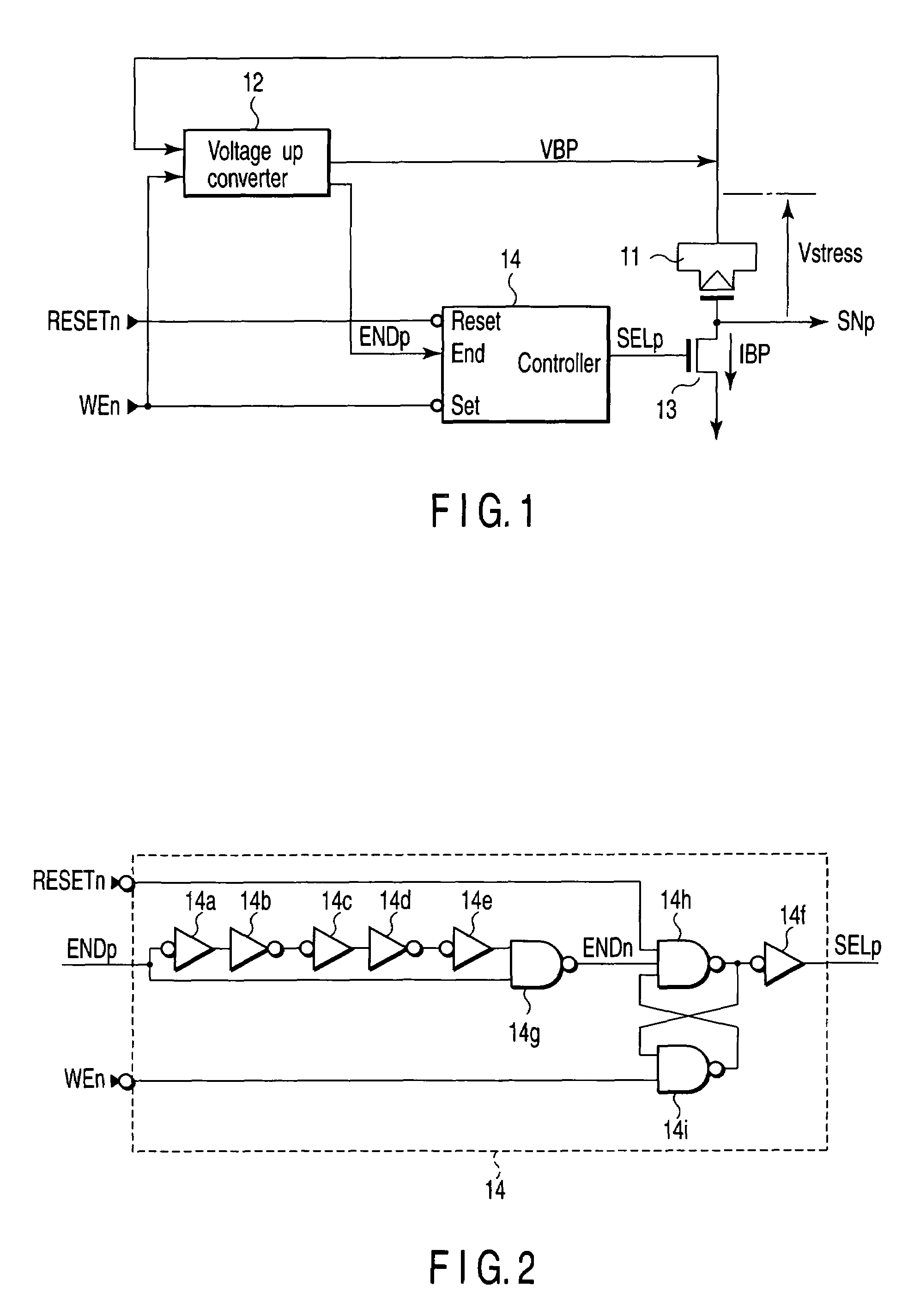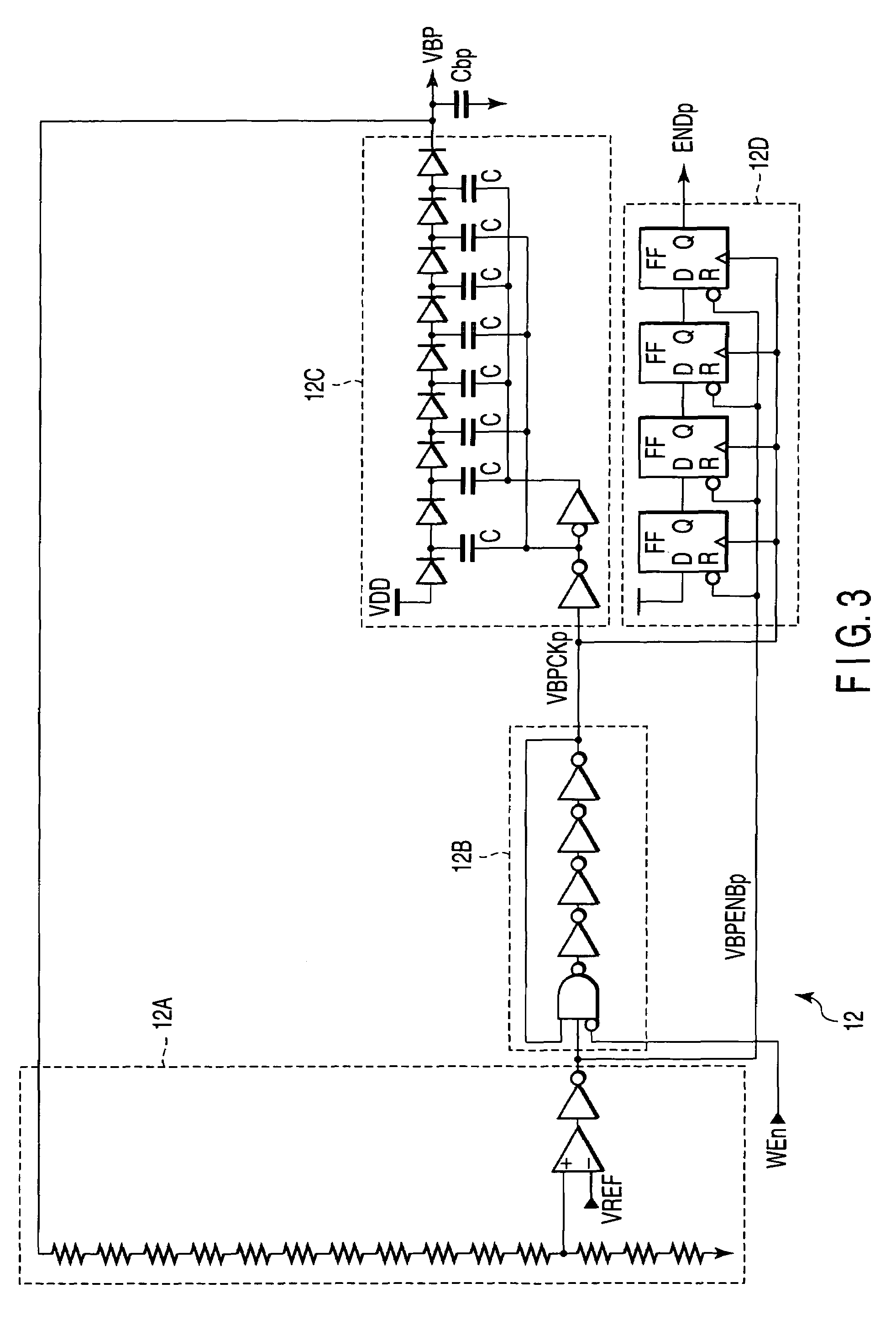One-time programable memory with additional programming time to ensure hard breakdown of the gate insulating film
a one-time programable memory and gate insulating film technology, applied in static storage, digital storage, instruments, etc., can solve the problems of increased electrical stress, reduced read current, and circuits with excessive stress
- Summary
- Abstract
- Description
- Claims
- Application Information
AI Technical Summary
Benefits of technology
Problems solved by technology
Method used
Image
Examples
first embodiment
[0030]FIG. 1 shows a basic arrangement of an OTP memory (nonvolatile semiconductor memory device) according to a first embodiment of the present invention. The OTP memory uses an anti-fuse element (a semiconductor element having a MOS structure) as a storage element and can be written with information only once. In the first embodiment, the OTP memory includes an internal step-up power supply that generates a high voltage VBP (e.g., 7 V) for writing as a first voltage to be applied to the anti-fuse element based on a relatively low voltage (e.g., 2.5 V) supplied from the outside.
[0031]Referring to FIG. 1, an internal step-up power supply (voltage up converter) 12 serving as a power supply circuit is connected to one end (source / drain) of an anti-fuse element 11 corresponding to an insulating film breakdown type storage element that is programmed with information. One of the source and drain of an n-type MOS transistor serving as an open / close switch (control switch) 13 is connected ...
second embodiment
[0077]FIG. 7 shows an arrangement of an internal step-up power supply (power supply circuit) in an OTP memory (nonvolatile semiconductor memory device) according to a second embodiment of the present invention. The OTP memory uses an anti-fuse element (a semiconductor element having a MOS structure) as a storage element and can be written with information only once.
[0078]The internal step-up power supply 12′ according to the second embodiment includes a potential sensing circuit (sensing circuit) 12A′, an oscillator 12B′, a charge pump circuit (voltage generation circuit) 12C′, a replenished charge measuring device (counter circuit) 12D′ and a load capacitor Cbp. The circuits 12A′ and 12C′ make up a feedback loop to generate a high voltage VBP stably.
[0079]The potential sensing circuit 12A′ compares a step-up power supply voltage VBP with a reference power supply voltage VREF and controls the power supply current to be supplied to the charge pump circuit 12C′ to keep the step-up pow...
third embodiment
[0089]FIG. 8 shows an arrangement of an OTP memory (nonvolatile semiconductor memory device) according to a third embodiment of the present invention. The OTP memory uses an anti-fuse element (a semiconductor element having a MOS structure) as a storage element and can be written with information only once. In the third embodiment, the OTP memory includes sixty-four repetitive units (storage cells) 41 that stores 64-bit information and an internal step-up power supply 12′ as shown in FIG. 7. The same components as those of the second and third embodiment are denoted by the same reference numerals and their detailed descriptions are omitted.
[0090]Each (for one bit) of the repetitive units 41 includes an information storage unit having an anti-fuse element (insulating film breakdown type storage element) 11, a potential barrier (protection transistor) 18, an open / close switch (control switch) 13 and a sense amplifier 19. Each of the repetitive units 41 also includes a control circuit ...
PUM
 Login to View More
Login to View More Abstract
Description
Claims
Application Information
 Login to View More
Login to View More - R&D
- Intellectual Property
- Life Sciences
- Materials
- Tech Scout
- Unparalleled Data Quality
- Higher Quality Content
- 60% Fewer Hallucinations
Browse by: Latest US Patents, China's latest patents, Technical Efficacy Thesaurus, Application Domain, Technology Topic, Popular Technical Reports.
© 2025 PatSnap. All rights reserved.Legal|Privacy policy|Modern Slavery Act Transparency Statement|Sitemap|About US| Contact US: help@patsnap.com



